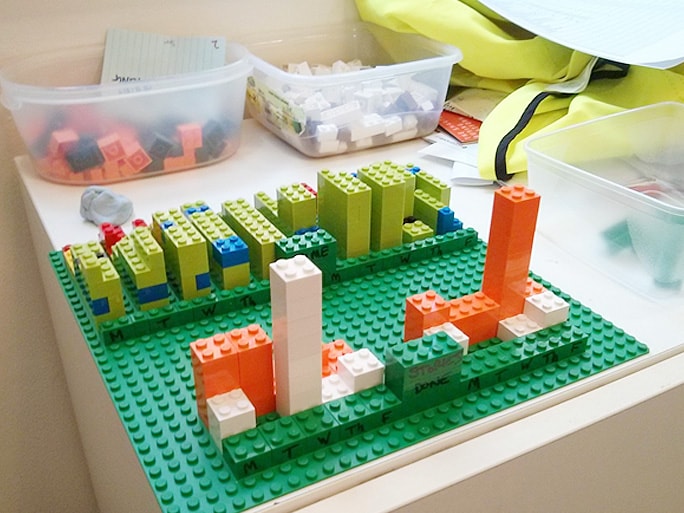
Time-consuming, boring, frustrating. This is what people usually say about having to fill out timesheets. Getting the employees to complete and submit timesheets on time is a challenge for managers in any organization where internal procedures involve time tracking.
Usual recommendation is explaining the employees why it is so important to have relevant and timely time-track data, not judging the submitted data, and simplifying the time tracking procedure. These measures are supposed to help manage the time tracking process and prevent delays.
However, too often standard methods just don’t work and people keep being reluctant to track their time – punctually or at all. Then the employers have to invent creative ways to motivate people to do their timesheets on time.
Turning Time Tracking into Something Else
Did you notice how willingly people spend hours chatting or playing games, but hardly find a couple of minutes to fill in the timesheet? This fact suggests that turning time tracking into a game or an unobtrusive communication might be an adequate solution.
Everyone hates remembering on their own timesheets, and everyone hates chasing colleagues for their timesheets in the end of every month. So why make real people make chase others
One agency replaced their office manager who was responsible for timesheets with a Slack bot that simply sent the employees one question every day – “What did you do today?” After collecting all answers, the bot filled in the timesheets for the entire team. So instead of filling in spreadsheets, the employees needed to communicate with a Slack contact as if it were their coworker.
Another approach is gamifying the time tracking process. The solution can be finding a timesheet system that makes this process more fun or organizing a competition among coworkers. One company used Lego bricks to track time expenses its software development and QA teams by building towers. Different colors allowed to track status of the task (committed, QA completed, etc.) and break down time expenses by specific tasks (planning, development, bug fixing, etc.).

This method is definitely of no use for creating reports on time expenses (think of disassembling the towers and counting bricks!), leave alone billing customers on the basis of collected information. But it’s fun and it helps be aware of the project progress for all participants – so it works.
Rewards and Incentives
A popular practice is motivating employees with prizes for doing timesheets on time. For example, this idea can be implemented as a drawing for a prize, in which only those employees who submitted their timesheets on time can participate. The employees of the companies where this type of motivation was implemented report that it really worked in their offices and boosted morale amongst the employees.
That’s a great motivation indeed, but there are opinions that extra rewards for employees for simply doing their job are not quite correct. They are supposed to do the timesheets in a certain period of time, so negative consequences of not filling in and submitting them would be more correct than prizes for doing timesheets according to the company’s regulations. Probably managers who share this opinion are those who implement the next type of motivating methods.
Evil Practices
The easiest and the evilest way to make people submit timesheets is quite obvious: linking them to payments. No timesheets – no money. However, experts point out that caution is needed if you decide to use this method. Remember that not paying employees for doing their job or delaying payments is not legal.
Among possible solutions, some companies pay those who don’t submit timesheets on time by cheque and the payment takes longer, instead of a direct deposit in a shorter time. No expense reimbursements until timesheets are submitted is another monetary motivating method.
One agency came up with blocking Facebook, Instagram and Google until timesheets are done. This program called “Teacupping” helped not only get the employees to fill in their timesheets, but also block major social media distractions.
A similar practice is linking the timesheet system to the user’s inbox, so that the employee can’t log in to the inbox until the timesheet is done. Of course this works not for all employees: what is a disaster for a project manager, is a great way to reduce distractions for a designer or developer. Many would enjoy the effect of not submitting the timesheets, so this method is sometimes really questionable.
One of the most surprising methods of negative motivation is singing acapella on Monday after not submitting timesheets for the past week (unfortunately it’s not quite clear whether those who didn’t submit timesheets had to sing or to listen). As an alternative, another company’s experience could be used that involves making mandatory presentations for those who are bad at them.
Positive Motivation… With an Evil Twist
One of the most famous examples is the JWT’s Casa Agency’s office fridge full of free beer that unlocked on Fridays. The frustrating part was that the fridge refused to open until all employees completed their timesheets. That’s an evil way, but at least it seems to make Fridays more productive.
Another possible motivation method is sharing time tracking results on the office TV. If the privacy policy allows public sharing of personal work results, this can be an efficient motivation method. What is important here is not to cross the line where public shaming starts.
Finally, there are many motivating pictures and videos on the Internet about submitting timesheets. Here’s a funny video that we’d like to share with you:
Use a Time Tracking Tool with Automatic Reminders
Employees may fail to fill out timesheets out of mere forgetfulness. In this case, a simple reminder could help them accomplish this task with greater success and save managers a ton of nerves. Luckily, some time tracking tools have the notification functionality that gives users a prompt to complete their timesheets when needed, and one of such tools is actiTIME.
Besides automatic reminders, actiTIME offers plenty of useful features for project management, progress tracking and productivity analysis. Be sure to check them out during a free 30-day trial and get ready to observe your employees succeed in completing their timesheets just on time.
















































